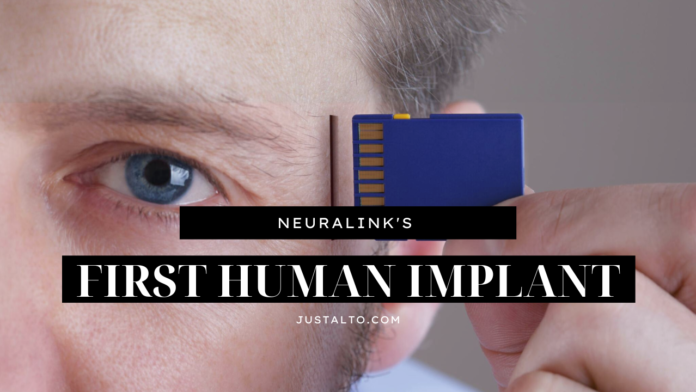Table of contents
Picture yourself directing a computer simply by thinking about it. There will be no more straining or straining your eyes due to screen time. Neuralink is bringing what seems like science fiction one step closer to reality. The inaugural insertion of a Neuralink brain-chip into a human being took place on January 29, 2024. Concern, anticipation, and a deluge of questions have all been triggered by this occurrence. So, let’s go into the realm of Neuralink, examine its potential, and investigate the ethical questions revolving around this innovative technology.
A Glance at the Mechanism
The implant from Neuralink is an engineering miracle in miniature. Envision a complex network of hair-thin threads painstakingly implanted into a part of your brain that controls movement. As you imagine moving your limbs or even typing, these threads record the electrical signals produced by neurons. This information is then wirelessly transferred to an external device, allowing you to control it merely by thinking.
The Power of Thought
The possibilities of this technology are astonishing. Neuralink has the potential to be a savior for paralyzed people, allowing them to regain their freedom. Imagine regaining the capacity to manipulate prosthetic limbs, sip from a cup, or even write a letter, all via the power of thinking. Beyond paralysis, Neuralink foresee possibilities for recovering sight, hearing, and perhaps increasing memory and cognitive function. The possibilities appear boundless, portraying a future where our thoughts fluidly interact with the environment around us.
But Wait, There’s More
While the potential benefits are clear, the ethical problems surrounding Neuralink cannot be overlooked. Concerns regarding privacy and data security are paramount. Who owns your thoughts once they’re digitized? How vulnerable are they to hacking or misuse? Additionally, the prospect for increasing cognitive ability raises problems regarding equity and societal repercussions. Should everyone have access to this technology, or will it create a new split between the “enhanced” and the “unenhanced”?
The Road Ahead
Neuralink’s first human implant marks a big milestone, but it’s merely the beginning. Much research and development lie ahead, along with significant discussions regarding the ethical framework that should guide this technology. We must ensure that Neuralink helps humanity, not the other way around. Open discourse, responsible development, and effective laws are required to negotiate the ethical minefield and guarantee that this brain-computer revolution benefits all, not just a select few.
The Choice is Ours
Neuralink lies at a crossroads. It has the potential to alter healthcare, communication, and even our understanding of consciousness. But with great power comes enormous responsibility. As a culture, we must decide how we wish to navigate this new frontier. Will we embrace the potential for good while reducing the risks? Or will we cave to fear and allow this technology to slip through our fingers? The choice is ours, and the decisions we make today will influence the future of brain-computer connections and, quite potentially, humanity itself.

